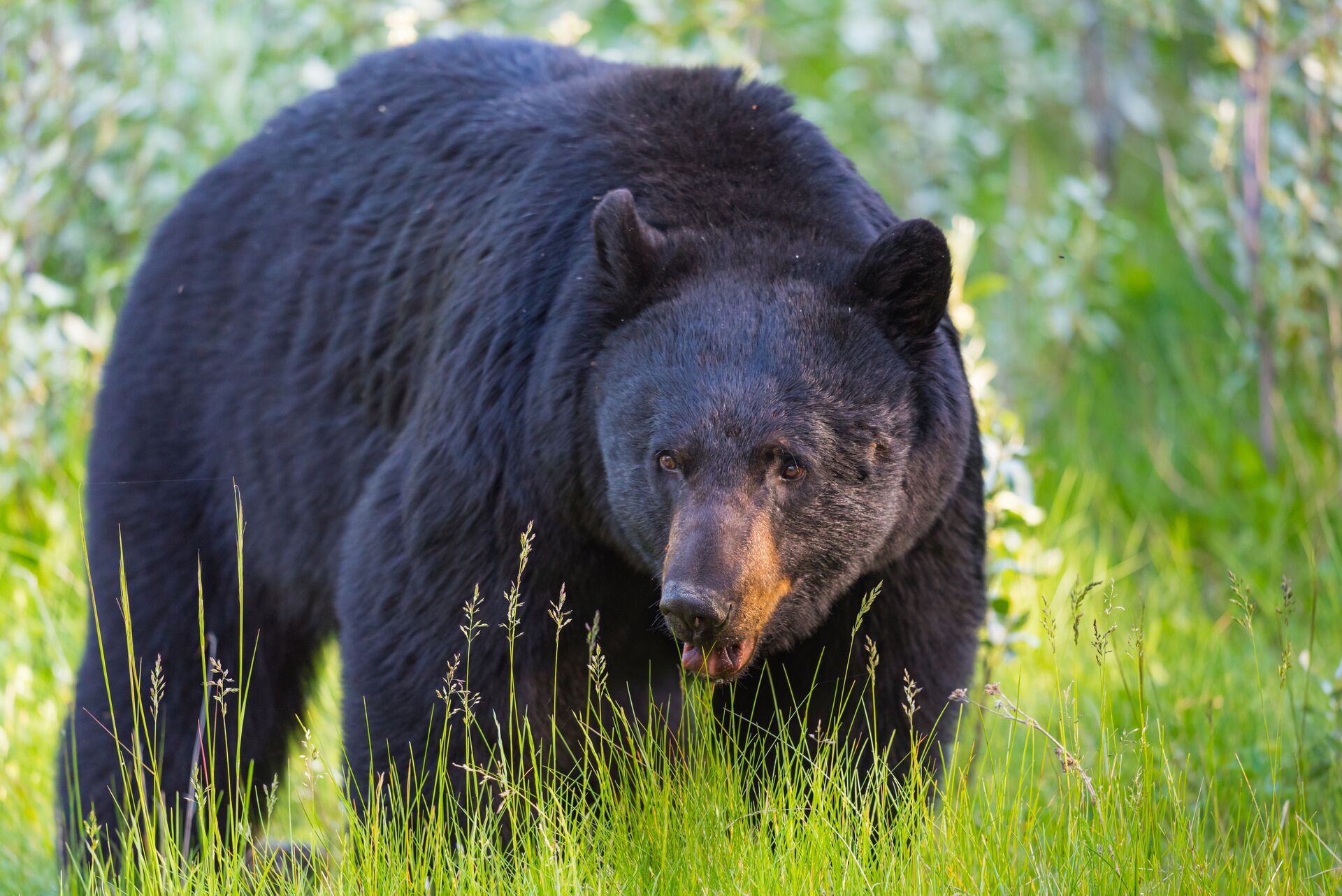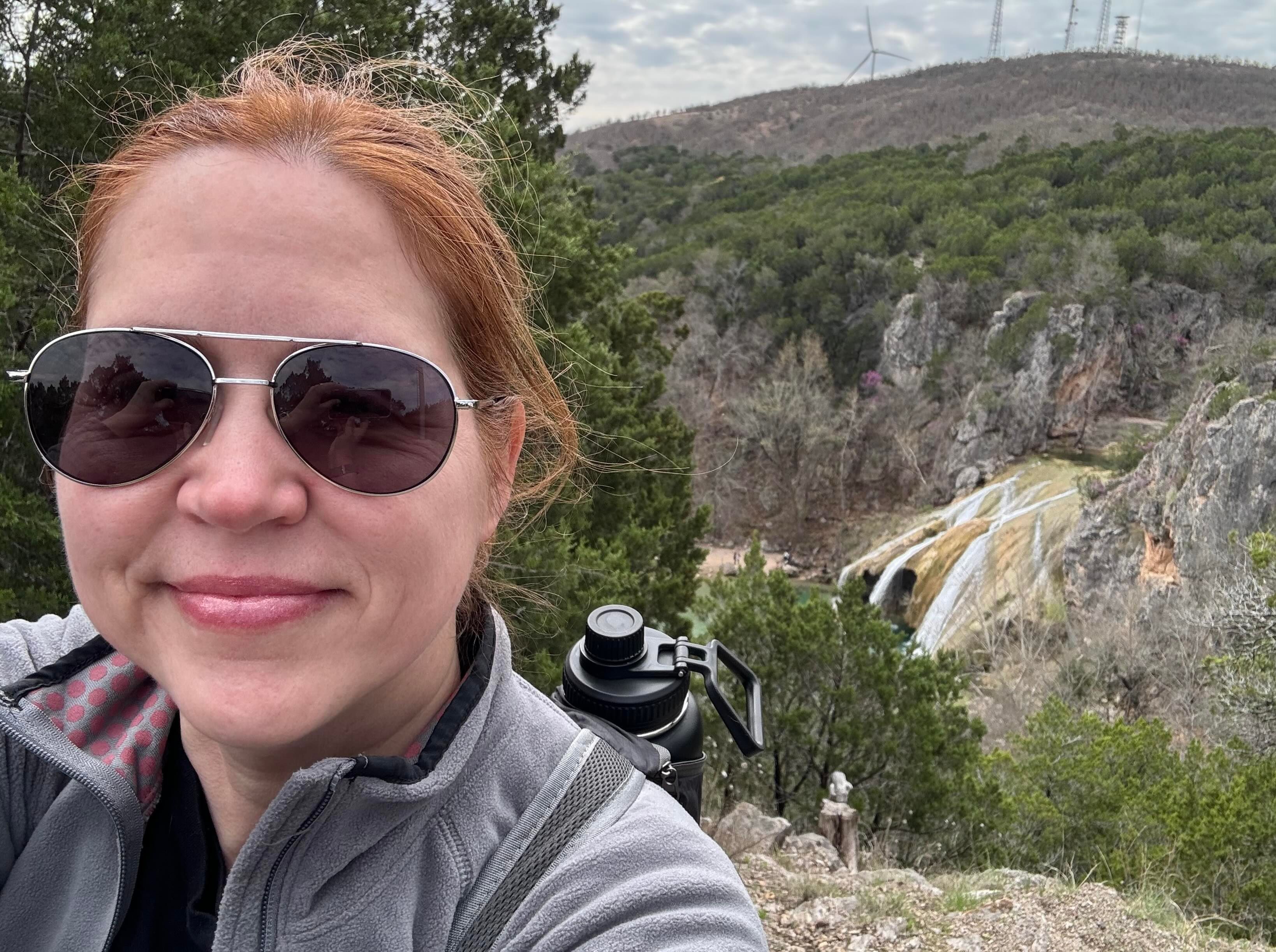For many, one spring bear hunt is all it takes to develop a lifelong passion for this Spring hunting tradition. Whether you're a seasoned hunter or new to bear hunting, choosing the right location can make all the difference in your success.
In this guide, we'll explore the best states for spring bear hunting and what makes them prime destinations for an unforgettable hunt.
These states are:
- Idaho
- Montana
- Wyoming
- Oregon
- Utah
- Arizona
- Alaska
- Maine (Honorable Mention)
- Washington (Honorable Mention)
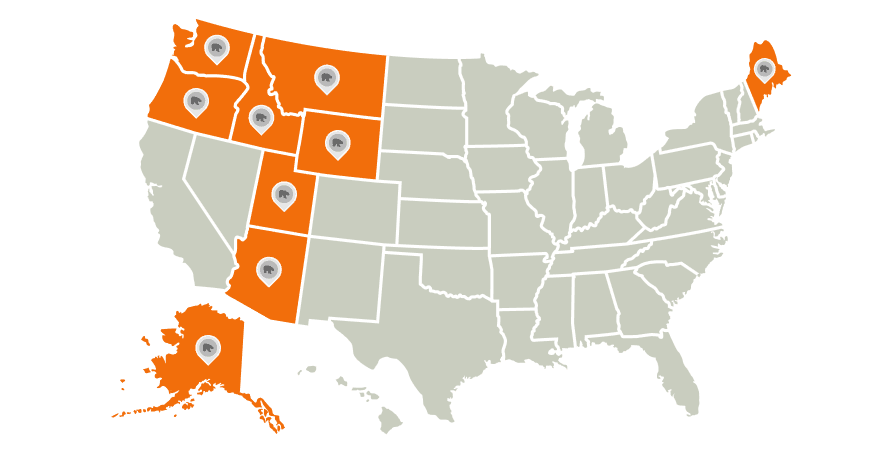
The Best States for Spring Bear Hunts
As with any other big game hunt, knowing where to hunt is crucial, as regulations, bear populations, and terrain vary widely. Whether you're still hoping to get out for a bear hunt this spring or thinking ahead to the fall or next year, consider any of these nine states for a bear hunt.
1. Idaho
Idaho provides extraordinary spring hunting conditions, allowing you to hunt the robust black bear population before waiting for fall for a big game hunt. Their bear population, estimated at around 20,000 to 30,000, is a natural phenomenon in the wild with stunning color variations ranging from blonde to cinnamon to dark black bears.
Most of the state is open for spring bear hunting, with both over-the-counter and various hunting areas open to hunting. The terrain, marked by rugged mountains and dense forests, is ideal for spot-and-stalk hunting or bait setups.
Check the latest information, as while legal, baiting is regulated regarding when, how, and where you can set up a bait station. The season typically opens from mid-April to late June. Note that the use of hounds is permitted in some areas.
2. Montana
To many, Montana is the pinnacle of bear hunting. Its pure wilderness of dense forests, alpine meadows, river valleys, and steep mountain slopes combine to support an abundant black population and provide opportunities for grizzly bear viewing (not hunting).
Montana black bear hunting is a treasured and highly respected fair-chase-based hunting culture, meaning a predominantly spot and stalk hunting style will likely be your best approach (baiting is illegal in Montana). As Montana's black bears emerge from hibernation in April and May, they head to south-facing slopes in search of fresh green vegetation, a crucial food source for bears trying to rebuild body fat after the long winter.
You'll work hard for a big bear, but it will be worth it.
Residents and non-residents can purchase over-the-counter tags. The 2025 season runs from April 15 through June 15.
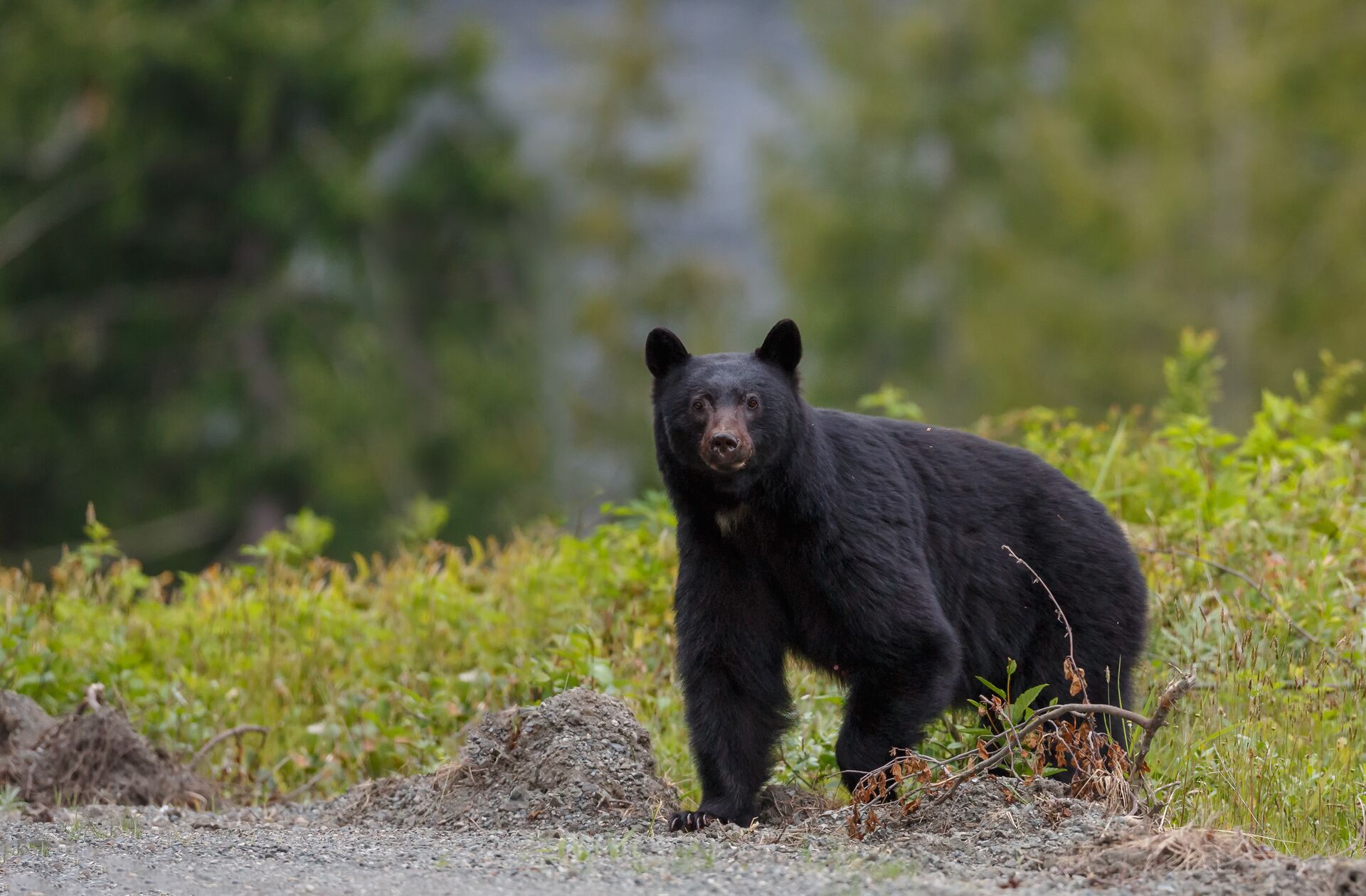
3. Wyoming
Black bears inhabit the forested and riparian zones of the Wyoming landscape, with a robust population that varies in density depending on the environment. Some grizzly territories add to the adventure and experience of the wild territories, as do a range of wildlife species.
Wyoming offers various terrain types, from alpine forests to sagebrush flats. We encourage you to spend some time observing bears in their native territories, learning their feeding habits, activity patterns, track markings, and scat. The hunting pressure is manageable, meaning Wyoming has a relatively high success rate and a decent number of trusted outfitters for backcountry and pack-out hunting opportunities.
The season opens around May at different times depending on rifle or archery hunts. Before entering the field, you must complete a bear identification course to avoid harvesting grizzlies.
Additionally, hunting units have a sow quota, meaning the unit will close once that quota is filled.
4. Oregon
The Oregon Department of Fish and Wildlife estimates the black bear population to be between 25,000 and 30,000, making it one of North America's most prominent black bear populations. This population is carefully controlled by hunting through designated areas and seasons.
To make the most of an Oregon hunt, start scouting early, ideally at the first signs of snowmelt, targeting warm south-facing slopes sprouting greenery. This familiarization with the landscape will definitely help your hunting strategy. Spot–and–stalk is the most common system due to baiting and hounds being prohibited.
The mild spring weather makes hunting in Oregon more enjoyable. Hunting is typically better towards the end of the season as the grasses green up, meaning sunny and warm conditions. OTC tags are available, and seasons run from mid-April to late May or early June.
5. Utah
The record for the highest-ranked black bear from B & C (Boone and Crockett Club) was found dead in Utah, measuring 23 10/16 inches. There are some big black bears in Utah, that's for sure, and if you're after some trophy class sizes, then Utah should be high up on your list.
The hunting terrain is diverse, supported by desert canyons and alpine forests, which provide hunts in some of the most scenic and challenging terrain on the North American bear hunting roster.
Bears in Utah can be targeted using bait and hounds; however, these are unit-dependent concessions and may not be permissible in every hunting unit, so pay close attention to regulations regarding your intended unit.
Limited-entry and OTC tags are available, with spring hunts generally starting in April. Before entering the field, you must complete an online Bear orientation at the Utah Division of Wildlife Resources.
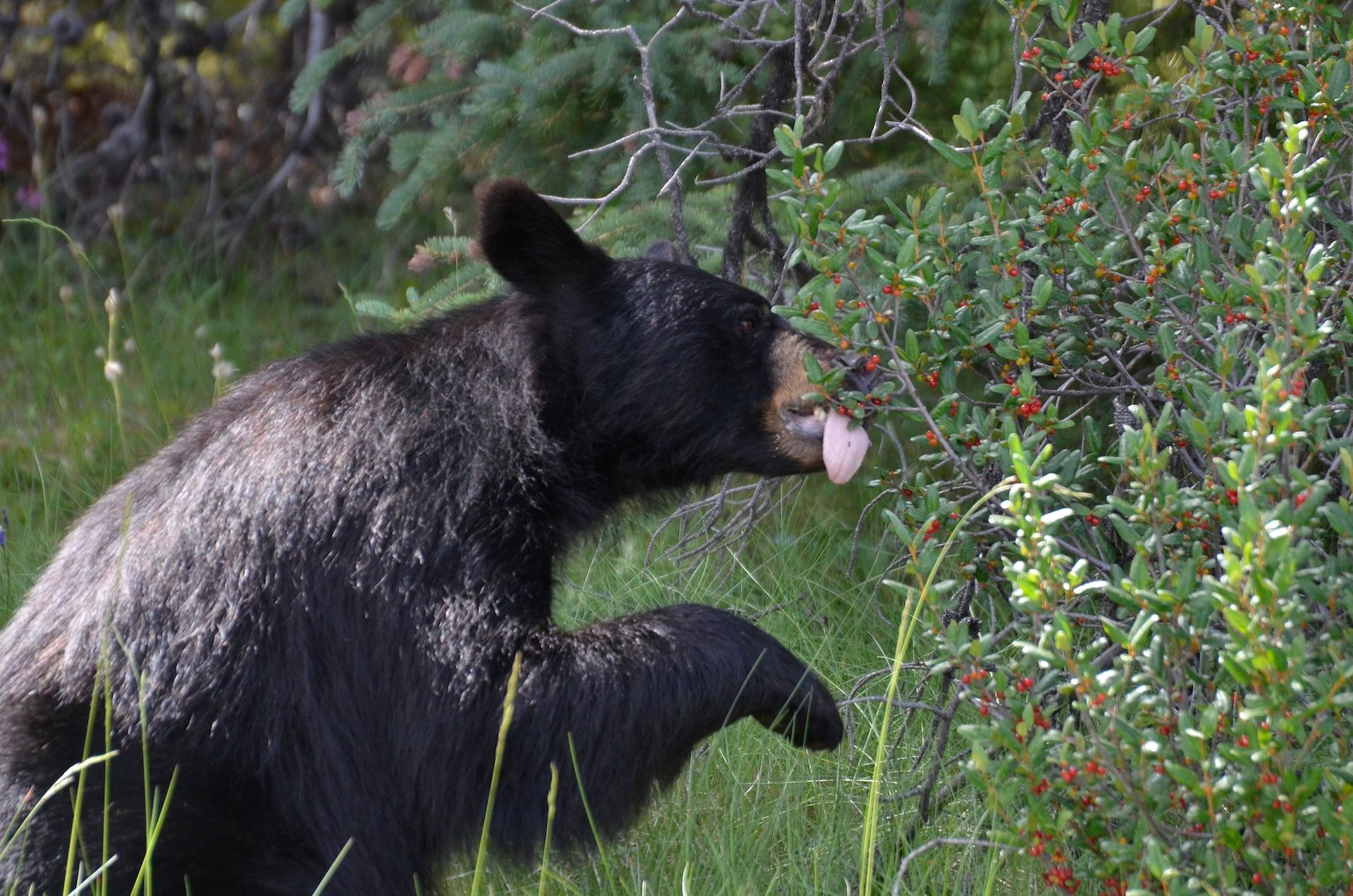
6. Arizona
An Arizona bear hunt will challenge your preconceived notions of a spring bear hunt as you swap budding greens and melting snow for heat, sun, and high elevations surrounded by cacti. It's the ultimate hunt to test your bear hunting skills using the spot-and-stalk strategy, as there are regulations against baiting and hounds.
Glassing, targeting vegetation-dense areas, locating watering holes such as springs at the base of canyons, using calls, and ambush hunting are all unique strategies employed during an Arizona bear hunt due to the unique topography and natural environment. Limited-entry hunts start as early as March; some overlap with turkey hunting, and you'll need a valid hunting license and a black bear tag to fulfill all mandatory requirements, such as reporting.
7. Alaska
No bear hunting list would be complete without mention of the Last Frontier State.
Alaska is a world-class hunting destination for both black and brown bear hunts. Many premium bear hunts are accessible only by bush planes or boats, making them a bucket-list hunt for established bear hunters looking to challenge themselves and explore untouched bear-hunting environments.
OTC tags are available for many areas. Spring hunts typically run from April through June, and depending on your hunting zone, you may need a harvest ticket, registration permit, drawing permit, or only a license.
For best results, consider spot-and-stalk along riverbanks and open tundra. Nonresidents must be accompanied in the field by an Alaska-licensed guide.
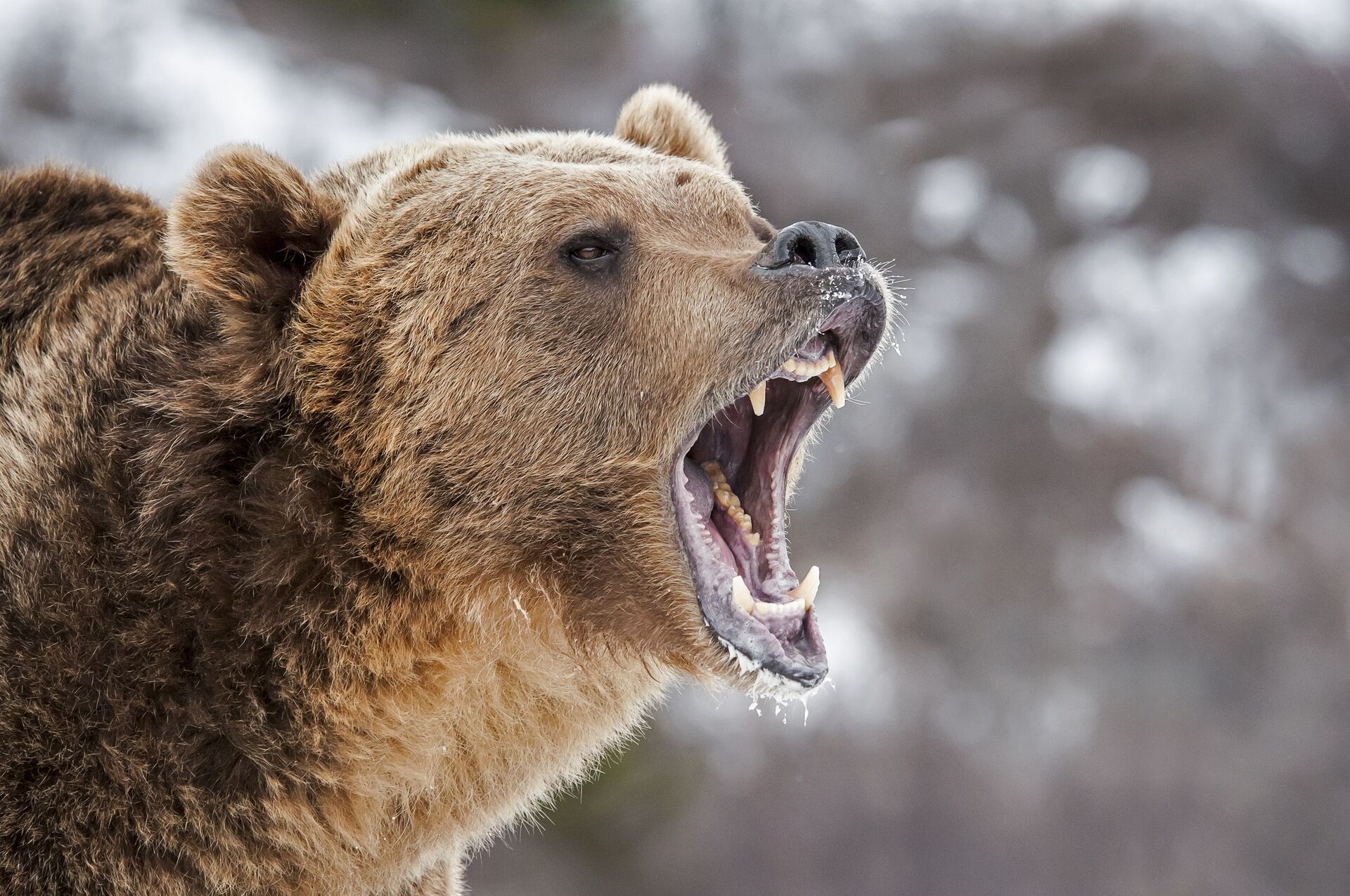
Honorable Mentions
There are more states where you can hunt bears than what we've included on this list. So, if you can't make it to one of the states above, check the hunting regulations for states closer to home.
We also wanted to highlight two states that don't offer spring bear hunting but are excellent options for hunting later in the year.
8. Maine
Maine is not one of the states with spring bear hunts. For 2025, the bear hunting season is in the fall. However, we had to include Maine on this list due to the state's dense black bear population, with current estimates placing numbers between 24,000 and 36,000 bears, primarily in the northern and western regions.
Bears can be hunted over bait or with hounds, meaning there's a high chance you can cultivate one big boar. If you opt for a spot and stalk strategy, target greening grasses, clover, and the buds of hardwood trees in the spring, where bears will seek out most of their food intake.
The tags are affordable for out-of-state hunters, and their guides are highly accessible. If running dogs, nonresidents must hunt with a Maine guide.
While the season doesn't open until August (not "technically" spring), baiting can begin in the summer.
9. Washington
While bear hunting in Washington isn't currently open in the spring, this state earns a spot on the list due to the excellent fall season for bear hunting, opening in early August (or really, really, late "spring" if you want to think of it that way).
Washington has a high black bear population, around 22,000. This population is spread across diverse landscapes, from the coastal rainforest to woodlands in the eastern sloped regions. Bears are also spotted in more open country areas and urban centers. There are also some big grizzlies roaming around the North-east territories.
Bear hunting in the state is strictly regulated, and some game management units require a bear identification test. Grizzlies are protected under state and federal laws. Baiting and the use of hounds are prohibited, and all successful hunters must submit the root of the first premolar tooth from their harvest.
Do Plenty of Research Before Your Bear Hunt
Before heading into the field, take the time to research the state's hunting regulations and licensing requirements and, if applicable, bear identification guidelines. Each state has its own set of rules designed to promote safety, ethical hunting, and wildlife conservation. Staying informed ensures a smooth and legal hunting experience.
Bear hunting is often utilized as an effective conservation strategy to control population numbers, so ensure you follow all bag limits and hunt ethically by providing a clean shot.
Every state offers a unique hunting experience, from rugged mountain terrain to vast wetlands and dense forests, so tailor your strategy, gear, and clothing to your intended zone.
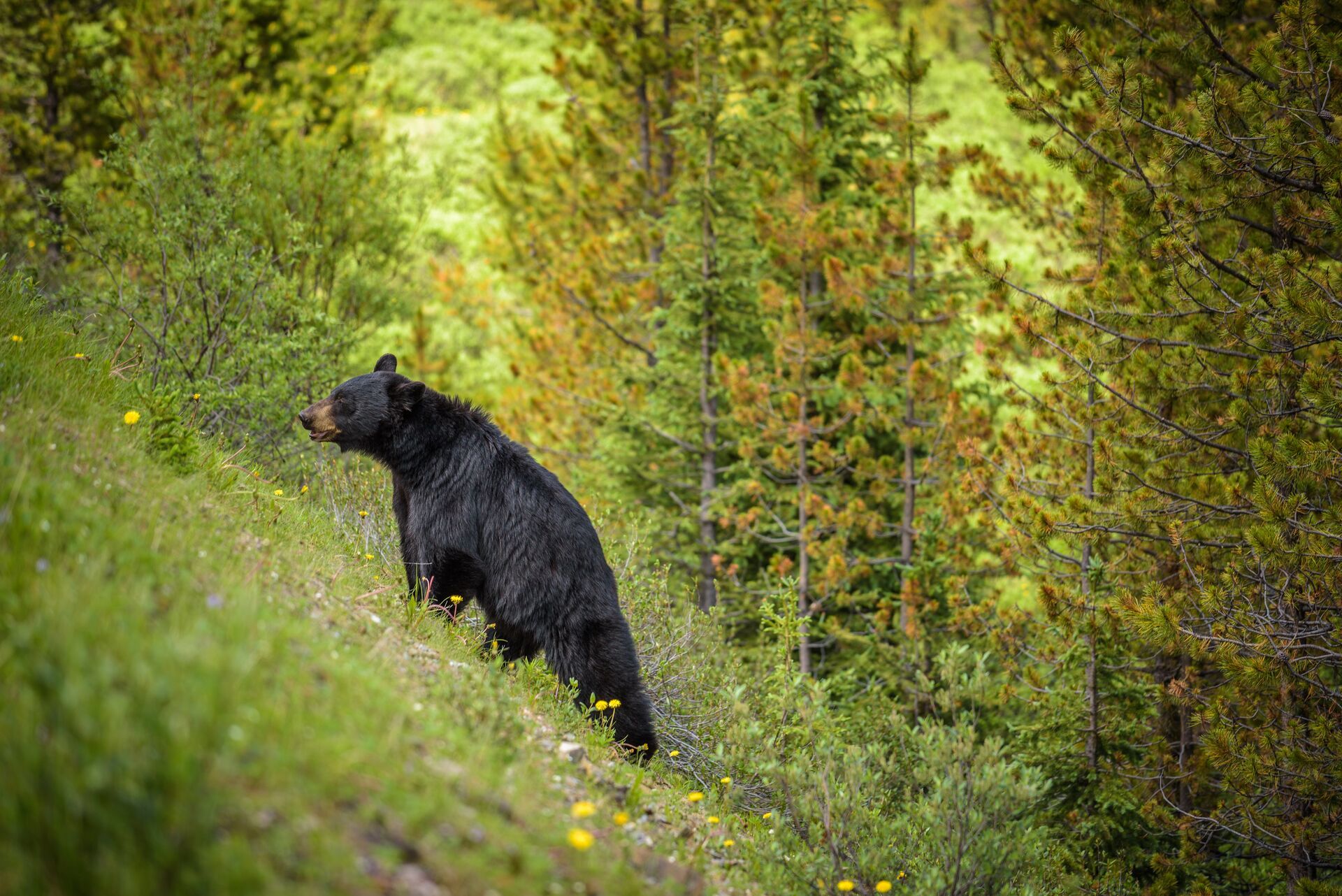
Bag Your Next (or First) Bear With HuntWise
Researching fundamentals, scouting, and preparation remain the same regardless of the state you choose for spring bear hunts. Whether you're hunting the cool forests of Washington or the warm desert regions of Arizona, targeting food sources, water, and active bear tracks will be your key to success.
For an even better hunting experience this spring and year-round, use HuntWise! With advanced mapping, weather forecasts, and prime hunting insights, HuntWise helps you stay informed, plan effectively, and maximize your time in the field, meaning you'll get one step closer to that dream bear.
Start planning your hunt for free! Download the HuntWise hunting app and enjoy your first week — free.

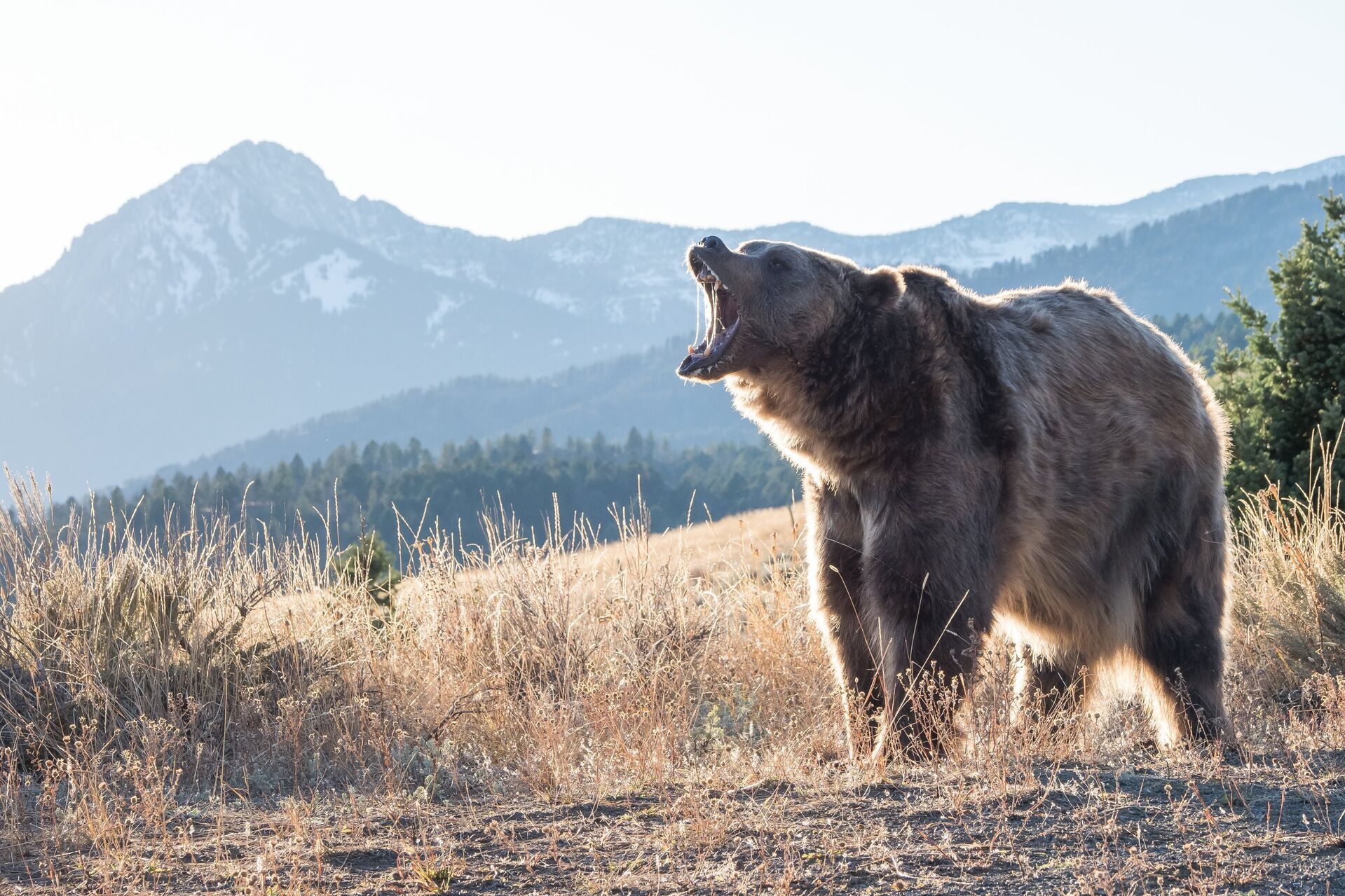
 Bear
Bear Bear
Bear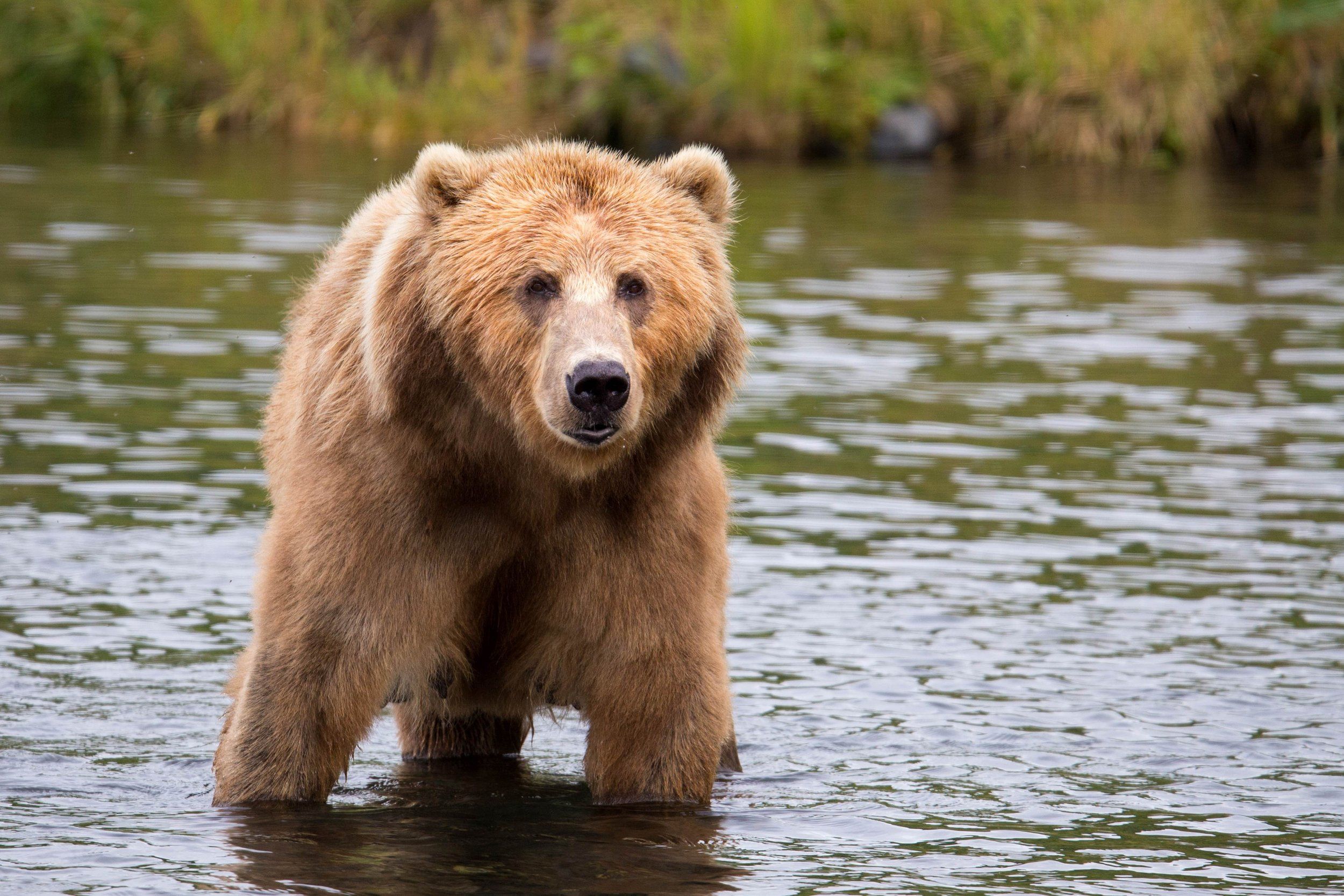 Bear
Bear